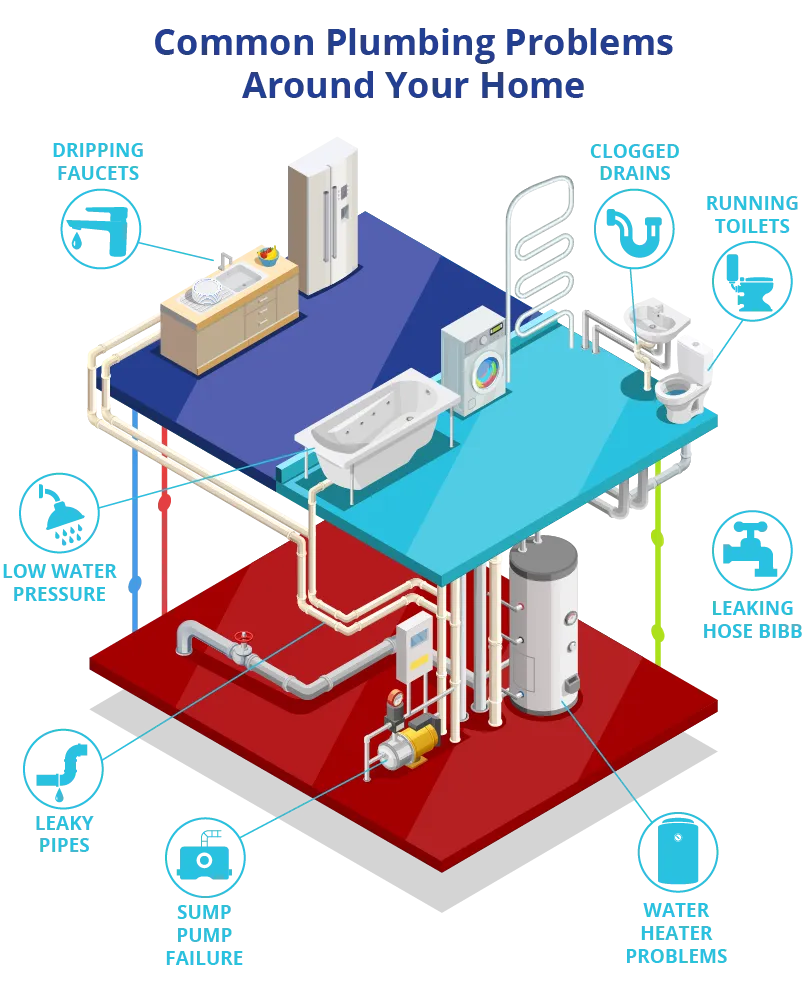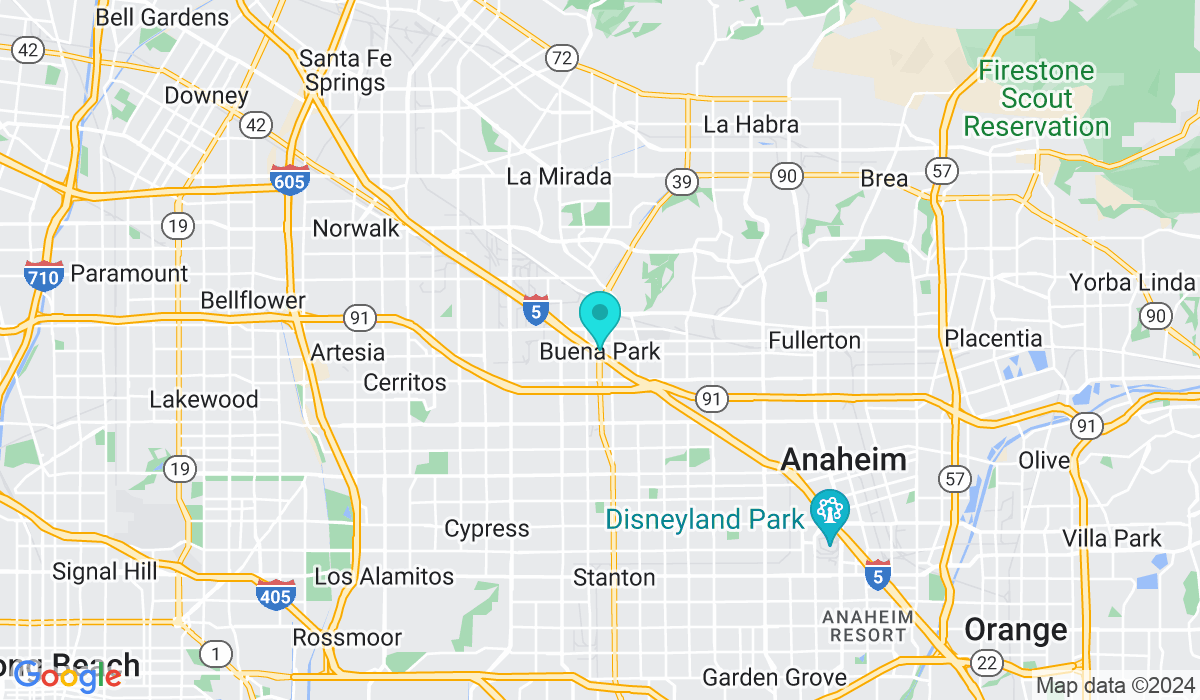Blog
Explore our curated selection of blogs to enhance your knowledge exponentially.

How to Deal With Plumbing Problems: A Homeowner’s Guide | Your Plumbing Solution
How to Deal With Plumbing Problems: A Homeowner’s Guide | Your Plumbing Solution

Introduction
Ah, plumbing problems – they're like uninvited guests that show up at the most inconvenient times, aren't they? Whether it's the mystery puddle under the sink or the toilet that just won't quit running, plumbing woes are a common headache for homeowners. But here's the good news: Not every leaky faucet or clogged pipe spells disaster. In fact, with a bit of know-how and the right tools, many plumbing issues are surprisingly manageable. So, before you panic or let the problem escalate (and believe me, ignoring that drip-drip-drip is a one-way ticket to Bigger Problem Town), let’s walk through some effective strategies for dealing with the most common plumbing predicaments.
Ready to become your home's plumbing hero? Let's dive in!
The Toolbox Essentials
First things first, let's talk tools. Having the right gear on hand is half the battle. Here's a quick rundown of what you'll need in your plumbing arsenal:
Plunger: A true MVP for both toilets and drains.
Pipe Wrench: For gripping and turning pipes.
Adjustable Wrench: Essential for tightening or loosening fittings.
Teflon Tape: Helps seal pipe threads and prevent leaks.
Plumber's Putty: Great for sealing joints and making watertight seals.
Auger or Snake: Your go-to for stubborn clogs deep within pipes.
Cup Plunger: Specifically designed for sinks and tubs.
With these tools, you're well-equipped to take on most minor plumbing challenges. Now, let's get to the actual problems and solutions.
Common Plumbing Problems and DIY Fixes
1. Dripping Faucets
That constant drip is not just annoying—it's money down the drain. Literally. Fixing a leaky faucet usually involves replacing a worn-out washer or O-ring. Turn off the water supply, disassemble the faucet, and replace the faulty part. Voila!
2. Slow Draining Sink
A sink that drains slower than molasses in January is a sign of a clog. Start with a plunger. If that doesn't work, try a mixture of vinegar and baking soda, or use a plumber's snake to dislodge the blockage.
3. Clogged Toilet
The plunger is your best friend here. A few vigorous pushes usually clear up most clogs. If the blockage is stubborn, an auger or snake can help break it up.
4. Running Toilet
This can be a real water waster. Often, it's due to a faulty flapper valve. Toilet repair kits are inexpensive and come with easy-to-follow instructions. You'll have it fixed in no time!
5. Leaky Pipes
Leaks can cause major damage if left unchecked. If you spot a leak, temporarily fix it with waterproof tape or a pipe clamp. Then, call a professional. This is one area where a DIY fix is usually only a temporary solution.
6. Low Water Pressure
If your shower feels more like a drizzle, you might have low water pressure. Check for clog-causing sediment in faucet aerators and showerheads first. If cleaning them doesn't help, the issue might be more complex, like a leak or breach in the main line.
7. Jammed Garbage Disposal
Never underestimate the power of the reset button on your disposal. If it's not working, hit reset. Still no luck? Use an Allen wrench to manually turn the blades and dislodge whatever's stuck.
When to Call a Professional
There's no shame in calling in the cavalry. Some problems are simply beyond the scope of a DIY fix. If you encounter the following, it might be time to dial up a plumber:
Persistent leaks or drips that defy your repair attempts
Major blockages that plungers and snakes can't clear
Signs of water damage to floors or walls
Installation of new pipes, sinks, or toilets
Wrapping Up: Prevention is Key
Remember, the best way to deal with plumbing problems is to prevent them in the first place. Regular maintenance, like cleaning drains and inspecting pipes for leaks, can save you a lot of headaches (and money) down the road. But when trouble does strike, you're now armed with the knowledge to tackle it head-on—or make the wise decision to call in a pro.
Facing plumbing problems can be a test of patience and skill, but it doesn't have to be a disaster. With the right approach and tools, you can either fix it yourself or know when it's time to call someone who can. Either way, you've got this!
Need a hand with a plumbing issue that's got you stumped? Contact us, and let's get your home back in tip-top shape!

How to Deal With Plumbing Problems: A Homeowner’s Guide | Your Plumbing Solution
How to Deal With Plumbing Problems: A Homeowner’s Guide | Your Plumbing Solution

Introduction
Ah, plumbing problems – they're like uninvited guests that show up at the most inconvenient times, aren't they? Whether it's the mystery puddle under the sink or the toilet that just won't quit running, plumbing woes are a common headache for homeowners. But here's the good news: Not every leaky faucet or clogged pipe spells disaster. In fact, with a bit of know-how and the right tools, many plumbing issues are surprisingly manageable. So, before you panic or let the problem escalate (and believe me, ignoring that drip-drip-drip is a one-way ticket to Bigger Problem Town), let’s walk through some effective strategies for dealing with the most common plumbing predicaments.
Ready to become your home's plumbing hero? Let's dive in!
The Toolbox Essentials
First things first, let's talk tools. Having the right gear on hand is half the battle. Here's a quick rundown of what you'll need in your plumbing arsenal:
Plunger: A true MVP for both toilets and drains.
Pipe Wrench: For gripping and turning pipes.
Adjustable Wrench: Essential for tightening or loosening fittings.
Teflon Tape: Helps seal pipe threads and prevent leaks.
Plumber's Putty: Great for sealing joints and making watertight seals.
Auger or Snake: Your go-to for stubborn clogs deep within pipes.
Cup Plunger: Specifically designed for sinks and tubs.
With these tools, you're well-equipped to take on most minor plumbing challenges. Now, let's get to the actual problems and solutions.
Common Plumbing Problems and DIY Fixes
1. Dripping Faucets
That constant drip is not just annoying—it's money down the drain. Literally. Fixing a leaky faucet usually involves replacing a worn-out washer or O-ring. Turn off the water supply, disassemble the faucet, and replace the faulty part. Voila!
2. Slow Draining Sink
A sink that drains slower than molasses in January is a sign of a clog. Start with a plunger. If that doesn't work, try a mixture of vinegar and baking soda, or use a plumber's snake to dislodge the blockage.
3. Clogged Toilet
The plunger is your best friend here. A few vigorous pushes usually clear up most clogs. If the blockage is stubborn, an auger or snake can help break it up.
4. Running Toilet
This can be a real water waster. Often, it's due to a faulty flapper valve. Toilet repair kits are inexpensive and come with easy-to-follow instructions. You'll have it fixed in no time!
5. Leaky Pipes
Leaks can cause major damage if left unchecked. If you spot a leak, temporarily fix it with waterproof tape or a pipe clamp. Then, call a professional. This is one area where a DIY fix is usually only a temporary solution.
6. Low Water Pressure
If your shower feels more like a drizzle, you might have low water pressure. Check for clog-causing sediment in faucet aerators and showerheads first. If cleaning them doesn't help, the issue might be more complex, like a leak or breach in the main line.
7. Jammed Garbage Disposal
Never underestimate the power of the reset button on your disposal. If it's not working, hit reset. Still no luck? Use an Allen wrench to manually turn the blades and dislodge whatever's stuck.
When to Call a Professional
There's no shame in calling in the cavalry. Some problems are simply beyond the scope of a DIY fix. If you encounter the following, it might be time to dial up a plumber:
Persistent leaks or drips that defy your repair attempts
Major blockages that plungers and snakes can't clear
Signs of water damage to floors or walls
Installation of new pipes, sinks, or toilets
Wrapping Up: Prevention is Key
Remember, the best way to deal with plumbing problems is to prevent them in the first place. Regular maintenance, like cleaning drains and inspecting pipes for leaks, can save you a lot of headaches (and money) down the road. But when trouble does strike, you're now armed with the knowledge to tackle it head-on—or make the wise decision to call in a pro.
Facing plumbing problems can be a test of patience and skill, but it doesn't have to be a disaster. With the right approach and tools, you can either fix it yourself or know when it's time to call someone who can. Either way, you've got this!
Need a hand with a plumbing issue that's got you stumped? Contact us, and let's get your home back in tip-top shape!
COME & VISIT US ANYTIME
Contact Us Today!
HOURS: 9am - 5pm
Buena Park, CA
(714) 880-5483

Copyright 2024 HotShot Plumbing. All Rights Reserved
